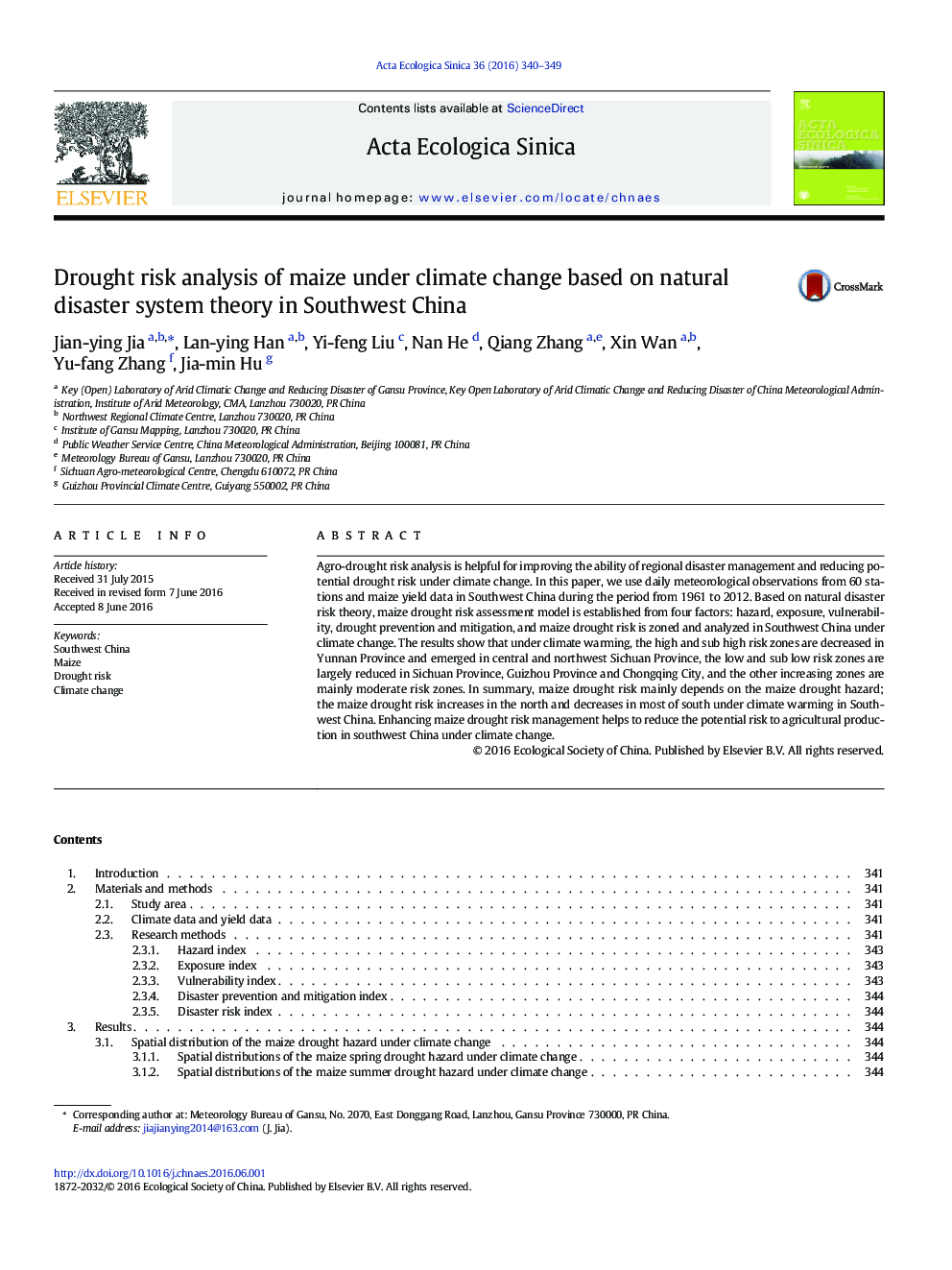| Article ID | Journal | Published Year | Pages | File Type |
|---|---|---|---|---|
| 4379721 | Acta Ecologica Sinica | 2016 | 10 Pages |
Agro-drought risk analysis is helpful for improving the ability of regional disaster management and reducing potential drought risk under climate change. In this paper, we use daily meteorological observations from 60 stations and maize yield data in Southwest China during the period from 1961 to 2012. Based on natural disaster risk theory, maize drought risk assessment model is established from four factors: hazard, exposure, vulnerability, drought prevention and mitigation, and maize drought risk is zoned and analyzed in Southwest China under climate change. The results show that under climate warming, the high and sub high risk zones are decreased in Yunnan Province and emerged in central and northwest Sichuan Province, the low and sub low risk zones are largely reduced in Sichuan Province, Guizhou Province and Chongqing City, and the other increasing zones are mainly moderate risk zones. In summary, maize drought risk mainly depends on the maize drought hazard; the maize drought risk increases in the north and decreases in most of south under climate warming in Southwest China. Enhancing maize drought risk management helps to reduce the potential risk to agricultural production in southwest China under climate change.
